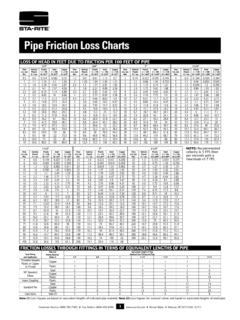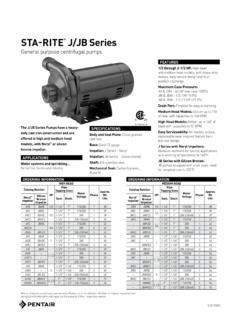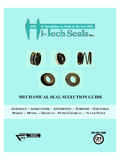Transcription of & the CIELAB - Rite Systems
1 Color & the CIELAB . System An Interpretation of the CIELAB System olor perception has been debated for many then reports the results to the computer which, in years and, as in any evaluation that relies on turn, performs a mathematical calculation. The human senses, the essence of analysis remains sample color to be evaluated is then analyzed by the subjective. However, with the evolution of same process and compared to the standard. computerized color Systems and controlled, artificial light sources, a more objective method to differentiate Sample color is available. Currently, there are many excellent The sample is the actual molded part or color chip software packages that translate detailed, color that is being analyzed against the standard.
2 It is vital formulas into mathematical calculations. that the standard and the sample be molded under the CIELAB , discussed here, is a mathematical, color same conditions. This will ensure that the gloss, thickness of the part, temperature stability, and other evaluation system. Other Systems available include processing variables remain constant. Hunter Lab and FMC II. But the OE system is recognized as the industry standard for artificial If, for example, there is a perceived difference in color evaluation. I gloss due to a change in molding conditio ns, the color control software and artificial light source will Three Elements Required perceive the sample as being "off color." And this for Color Description may jeopardize the integrity of the final product.
3 To perceive color accurately, three elements are Observer required: In color evaluation and color control, the instrument Light Source used to view the sample is called the observer. The Sample human eye is still the best observer, but in artificia l color evaluation we rely on the lens of the Observer spectrophotometer. Light Source I CIELAB * Color Space Typically, the color industry uses artificial daylight The International Commission on Illumination (called (D65) as the standard light source for color evaluation CIE) completed the first phase of CIELAB in 1931. It initially was developed as an objective, color and color con~ro1. (For our purposes here, we will call evaluation method using a light source, a sample, 'and it daylight.)
4 As seen in a laboratory light booth, daylight an observer. The original evaluation was called the two-degree observer because it was based on a two - offers a very vivid and detailed source for evaluation . degree field of vision. This method of viewing a Manufacturers will use a light source that is industry sample is equivalent to what the human eye would see specific, and daylight is only one of those source s. For from a distance. example, an automotive manufacturer may employ In 1965, the Commission made two substantial "horizon light" or "cool white, fluorescent light." Or, a changes to the CIELAB system by developing the ten - toy manufacturer that displays finished products in degree observer and defining artificial daylight (D65).
5 Stores with cool white, fluorescent bulbs may evaluate as a standard illuminate. The ten -degree field of vision color under the same light source in the laboratory. better represents a sample viewed at arm's length. And The color computer's light source is measured by an in 1976, the Commission's last revision of the instrument called a colorimeter or a CIELAB System was called CIE 1976. spectrophotometer. The spectrophotometer contains The CIELAB system uses tristimulus values which are the D65 light source and various other components the artificial interpretations of what the human required for color analysis. The operator measures a standard color through the lens of the spectrophotometer.
6 The instrument 2. eye sees. These values are defined as: X (representing CIELAB Color System the red stimulus of the eye), Y (representing the green Value Description stimulus of the eye), and Z (representing the blue stimulus of the eye). The Y tristimulus is also used to L* Lightness/darkness represent the lightness of a sample. (0 = Black; 100 = White). Basically, the CIELAB system compares a sample to a* Red shade (if the value is positive). Green shade (if the value is negative). a standard and makes a numerical determination based on the perceived color difference. In other b* Yellow shade (if the value is positive). words, the color difference is given a value and Blue shade (if the value is negative).
7 Plotted on a chart. DL' Lighter than standard (if the value is positive). The chart or area that the CIELAB system recognizes Darker than standard is called the "color space" (see Figure 1 bel ow). This (if the value is negative). theoretical space can be conceptualized as a three - dimensional cylinder with an axis running through the Da* More red than standard (if the value is positive). center from top to bottom. However, CIELAB uses a square plane to demonstrate the red/green and More green than standard (if the value is negative). yellow/blue axes through the cylinder. Db* More yellow than standard The table at the right shows the CIELAB Color (if the value is positive). System values which are described in more detail on More blue than standard the following pages.
8 (if the value is negative). DC More saturated than standard (if the value is positive). * The term " CIELAB " combines the commission's abbreviation (CIE) with letters that represent aspects qf color space (LAB) as Less saturated than standard illustrated in Figure 1. (if the value is negative). Figure 1: L*, a*, b* Color Space Chart White L *=100. / /. Yellow +b*. ~. Black L *=0. 3. CIELAB System L * Values In the color space chart (Figure 1, page 3), the red shade/green shade is represented by a horizontal The "lightness" of a sample is represented by the symbol "L*" and this value is based on the percent plane that runs east to west. If the a* value is of light reflectance. In the color space chart (Figure positive, it would appear in the red region of the 1, page 3), the L* value is the vertical axis running color space.
9 If negative, it would appear in the through the center. For this discussion, consider a green region. An a* value of zero, means the gray sample that is void of hue so that only its sample is gray and would appear directly in the lightness or darkness is relevant. center of the red/green plane. Notice that this plane also intersects with the lightness/darkness axis so If the L value is zero, the sample is black (as shown that the intensity of a color with an a* value of zero at the bottom of the chart). If the value is 100, the is actually determined by its L value. sample is white (as shown at the top of the chart). Any sample that is void of hue and falls somewhere between 0-100% reflectance will be a variation of Da* Values gray.
10 If the value is closer to 0%, the sample will be The Delta a* or "Da*" value determines the red a darker gray. If closer to 100%, it will be a lighter shade/green shade distinction between the standard gray. and the sample. This is the difference between the a* value of a standard and the a* value of a sample. DL * Values For example, if the a* value of a sample is and The Delta L or "DL " determines the the a* value of a standard is , the Da* value lightness/darkness difference between a sample and would be ( = ). (See Figure 2, a standard. This is done simply by subtracting the L below.). value of the standard from the L value of the sample. If the result of this calculation is a positive number then the sample would be "lighter" than the Figure 2: Sample CIELAB Color Analysis standard.





